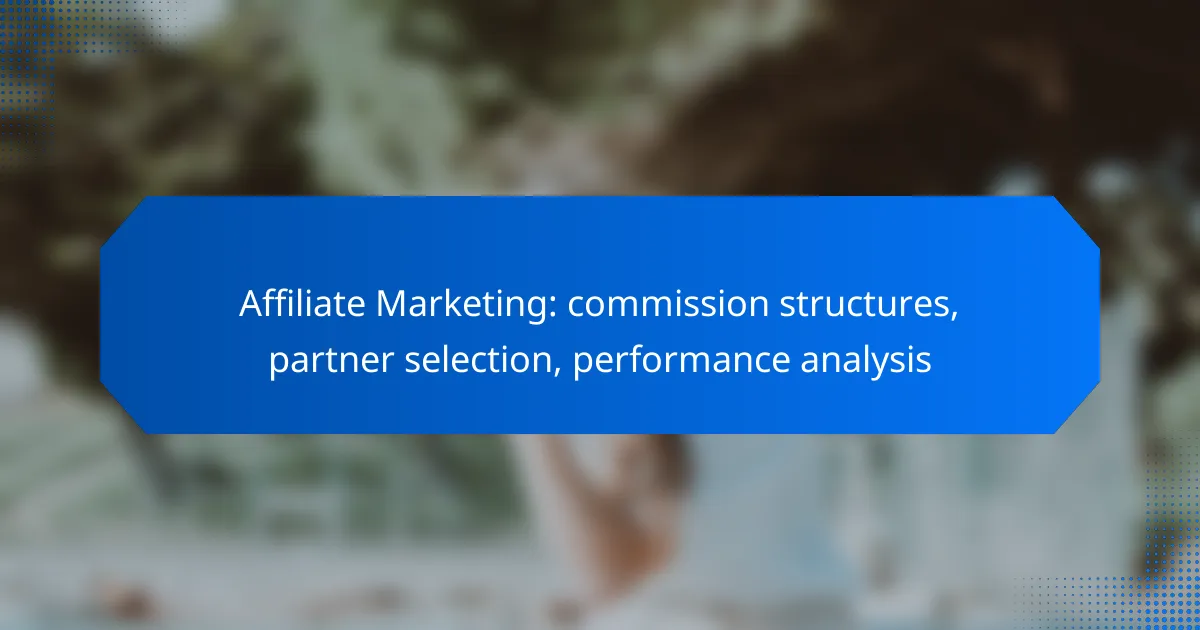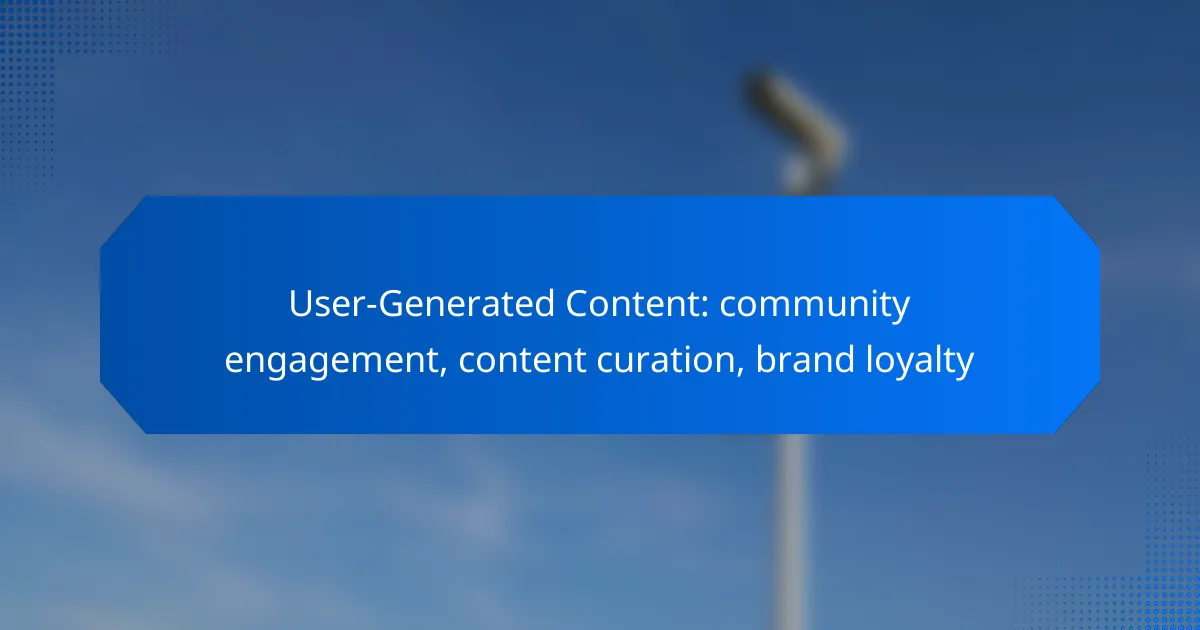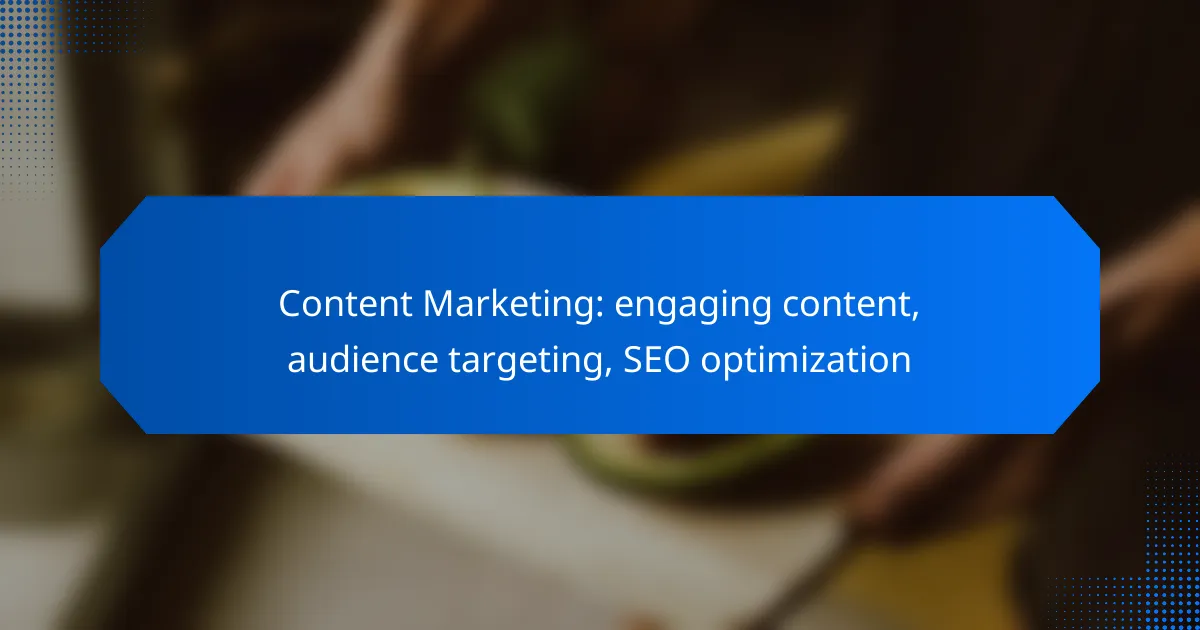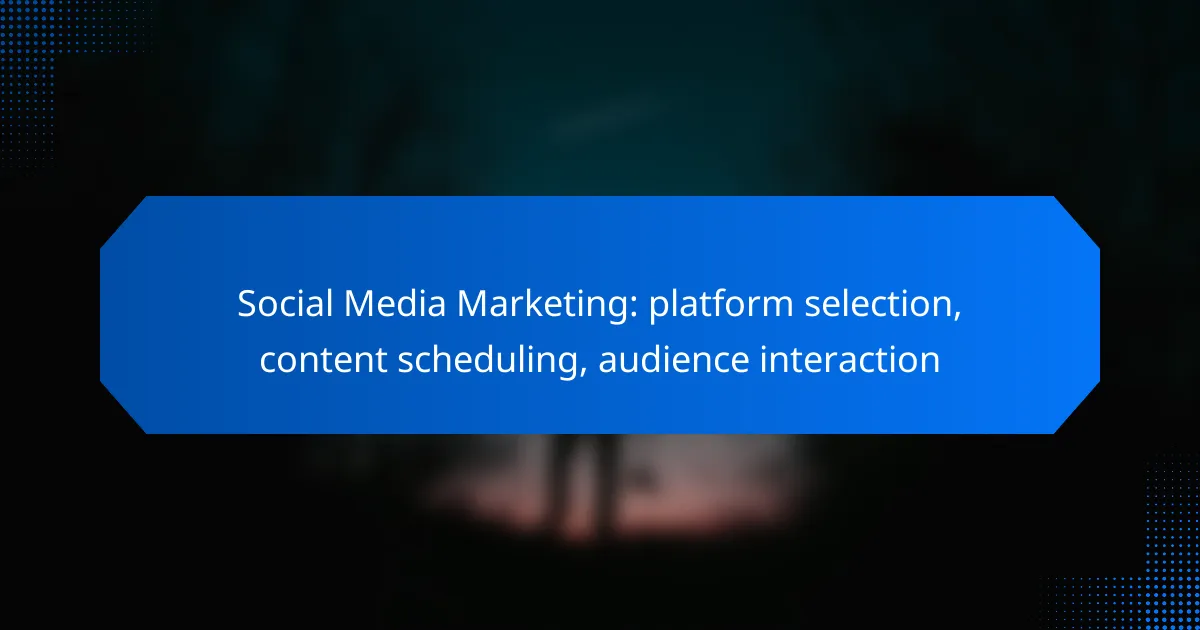
Social media marketing is essential for Australian businesses looking to connect with their audience effectively. Selecting the right platform tailored to your target demographic and content strategy is crucial for success. Additionally, implementing a robust content scheduling plan and fostering audience interaction can significantly enhance engagement and build a loyal community around your brand.
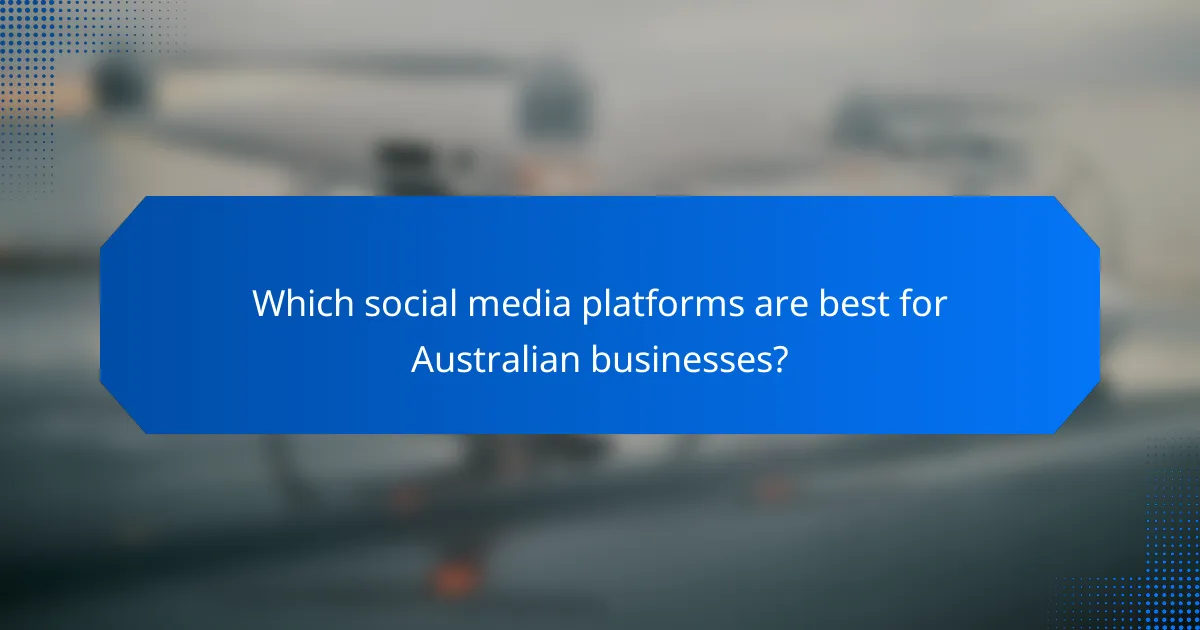
Which social media platforms are best for Australian businesses?
Australian businesses can benefit from a variety of social media platforms, each offering unique advantages. Choosing the right platform depends on your target audience, marketing goals, and the type of content you plan to share.
Facebook for broad reach
Facebook is ideal for Australian businesses seeking to reach a wide audience. With millions of active users in Australia, it allows brands to connect with diverse demographics through targeted advertising and engaging content.
To maximize your presence, create a business page, post regularly, and utilize Facebook Ads to reach specific audience segments. Consider using video content and live streams to enhance engagement.
Instagram for visual engagement
Instagram excels in visual storytelling, making it perfect for brands with strong imagery or lifestyle products. Australian users are highly engaged on this platform, often seeking inspiration and connection with brands.
Focus on high-quality images and videos, and utilize features like Stories and Reels to showcase your products creatively. Collaborating with influencers can also amplify your reach and credibility.
LinkedIn for B2B networking
LinkedIn is the go-to platform for B2B marketing in Australia, ideal for businesses looking to connect with other professionals. It offers opportunities for networking, lead generation, and sharing industry insights.
To leverage LinkedIn, maintain an updated company profile, share relevant articles, and engage in industry discussions. Joining LinkedIn Groups can also help you connect with potential clients and partners.
Twitter for real-time updates
Twitter is effective for sharing real-time updates and engaging in conversations. Australian businesses can use it to respond quickly to customer inquiries and participate in trending topics.
Keep your tweets concise and relevant, and use hashtags to increase visibility. Engaging with followers through polls and retweets can enhance your brand’s presence and foster community interaction.
TikTok for younger audiences
TikTok is rapidly gaining popularity among younger Australians, making it a valuable platform for brands targeting Gen Z and millennials. Its short-form video format encourages creativity and authenticity.
To succeed on TikTok, create entertaining and relatable content that resonates with your audience. Consider participating in challenges and trends to increase your visibility and engagement.
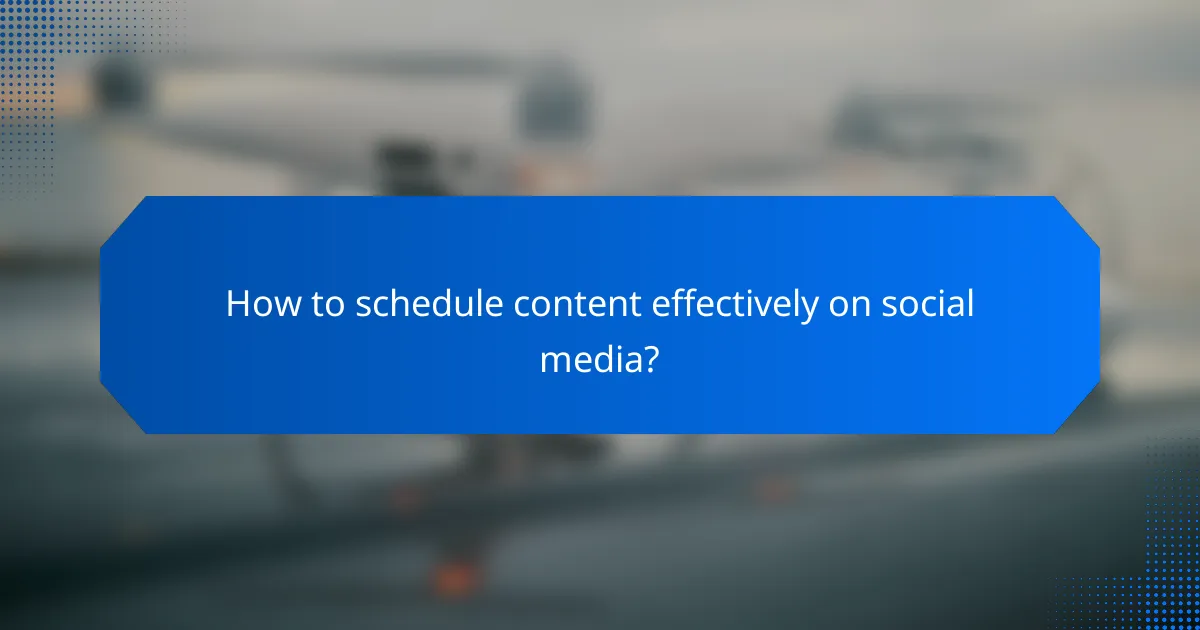
How to schedule content effectively on social media?
To schedule content effectively on social media, utilize scheduling tools, understand your audience’s online behavior, and maintain a consistent posting rhythm. This approach maximizes engagement and ensures your content reaches users at optimal times.
Use tools like Hootsuite
Hootsuite is a popular social media management tool that allows you to schedule posts across multiple platforms from a single dashboard. It offers features such as post previews, analytics, and team collaboration, making it easier to manage your social media presence.
Other tools like Buffer and Sprout Social also provide similar functionalities, allowing you to tailor your content strategy based on performance metrics. Choose a tool that fits your needs and budget, as many offer free trials to get started.
Optimal posting times for Australia
In Australia, optimal posting times can vary by platform and audience. Generally, weekdays during lunch hours (12 PM to 2 PM) and evenings (7 PM to 9 PM) tend to see higher engagement rates.
For example, studies suggest that posting on Facebook around 1 PM on Wednesdays and Thursdays can yield better results. However, it’s essential to analyze your specific audience’s behavior to determine the best times for your content.
Content calendar best practices
Creating a content calendar helps you plan and organize your social media posts effectively. Start by mapping out key dates, campaigns, and themes relevant to your audience. This ensures a balanced mix of promotional, educational, and engaging content.
Regularly review and adjust your calendar based on performance analytics and audience feedback. Consider using color-coding for different content types and scheduling reminders to stay on track. Avoid overloading your calendar; aim for consistency rather than frequency to maintain quality engagement.
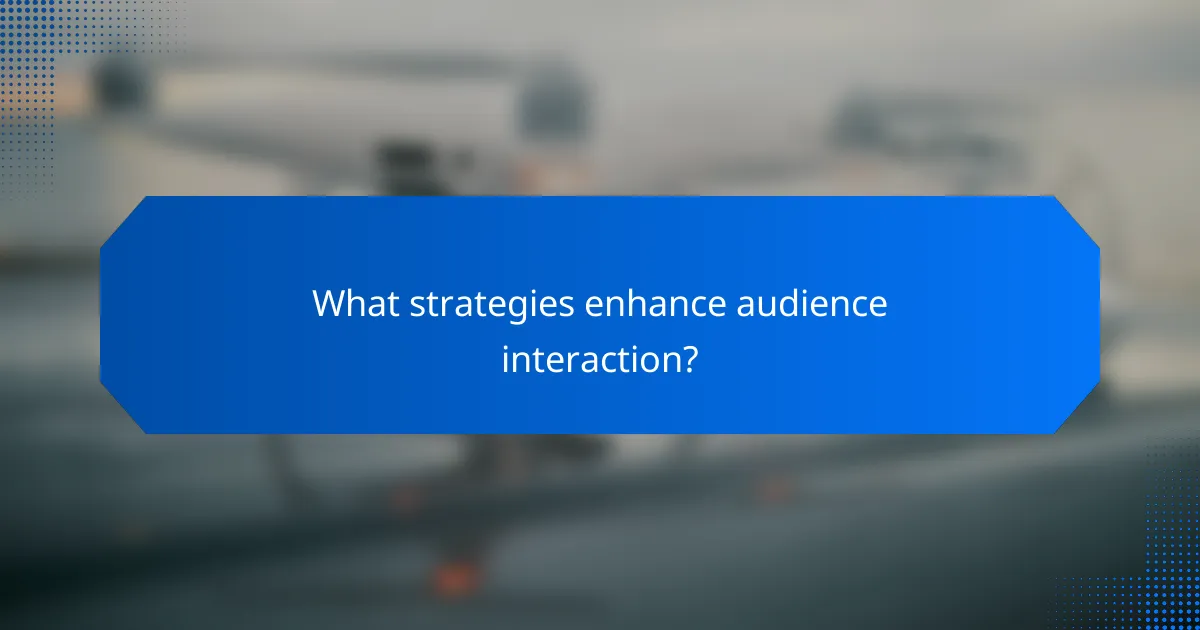
What strategies enhance audience interaction?
Enhancing audience interaction involves actively engaging your followers through various methods that encourage participation and feedback. Effective strategies include using polls and questions, responding to comments swiftly, and leveraging user-generated content to foster a sense of community.
Engagement through polls and questions
Using polls and questions is a straightforward way to boost engagement on social media. These interactive elements invite followers to share their opinions, making them feel valued and heard. For example, you might ask your audience to vote on a product feature or share their thoughts on a trending topic.
To maximize participation, keep polls short and relevant, ideally focusing on topics that resonate with your audience. Consider using stories or posts to present these polls, as they often yield higher interaction rates.
Responding to comments promptly
Timely responses to comments can significantly enhance audience interaction. When followers see that their comments are acknowledged quickly, they are more likely to engage further. Aim to respond within a few hours, if possible, to maintain a lively conversation.
Additionally, personalize your responses to make them feel more genuine. Use the commenter’s name and reference their specific comment to create a connection. This approach not only encourages the original commenter but also invites others to join the discussion.
Utilizing user-generated content
User-generated content (UGC) can be a powerful tool for increasing audience interaction. By encouraging your followers to share their own content related to your brand, you create a sense of community and trust. This could include photos, testimonials, or stories featuring your products or services.
To effectively utilize UGC, create campaigns that incentivize sharing, such as contests or giveaways. Always credit the original creators when reposting their content, as this fosters goodwill and encourages more followers to participate.
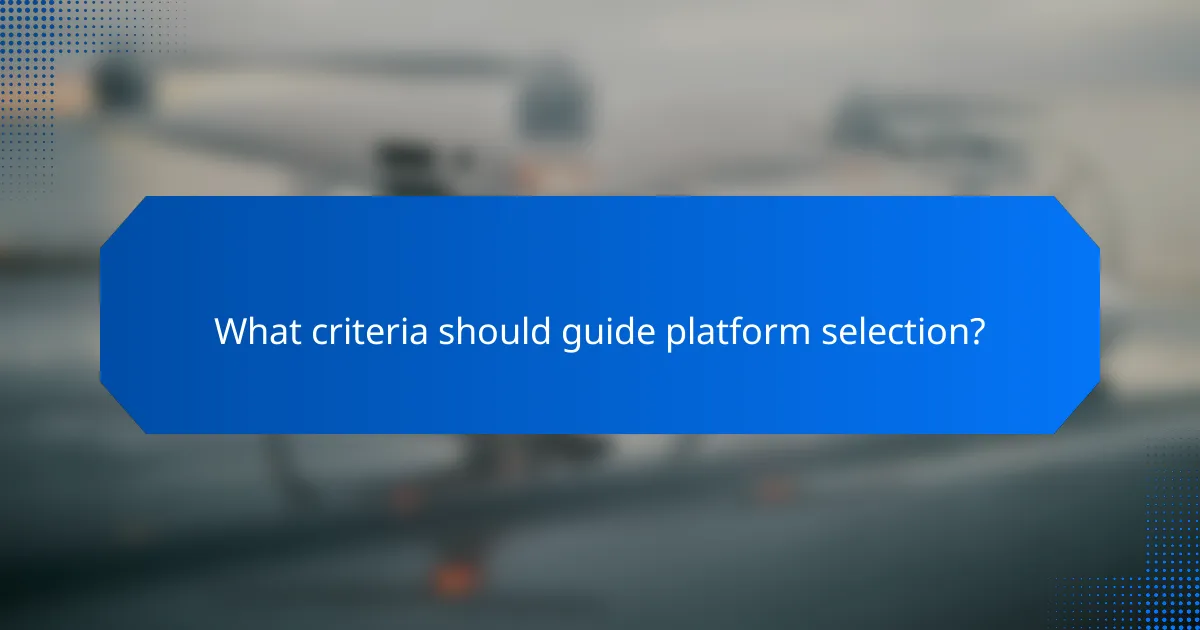
What criteria should guide platform selection?
When selecting social media platforms, focus on where your target audience spends their time and the type of content you plan to share. Consider demographics, content suitability, and engagement potential to make informed choices.
Target audience demographics
Understanding your target audience’s demographics is crucial for effective platform selection. Different social media platforms attract varying age groups, genders, and interests. For instance, platforms like TikTok and Instagram are popular among younger users, while Facebook tends to have a broader age range.
To identify the best platforms, research the demographics of each option. Tools like Pew Research Center provide insights into user statistics across platforms. This can help you align your marketing efforts with the preferences of your audience.
Content type suitability
The type of content you intend to create should influence your platform choice. Visual content, such as images and videos, performs well on Instagram and TikTok, while text-based content may thrive on Twitter and LinkedIn. Assess the strengths of each platform to ensure your content resonates.
Consider the format and style of your content. For example, if you plan to produce long-form articles, LinkedIn or Facebook may be more appropriate. Conversely, if you focus on quick updates or engaging visuals, platforms like Instagram or Snapchat could be more effective.
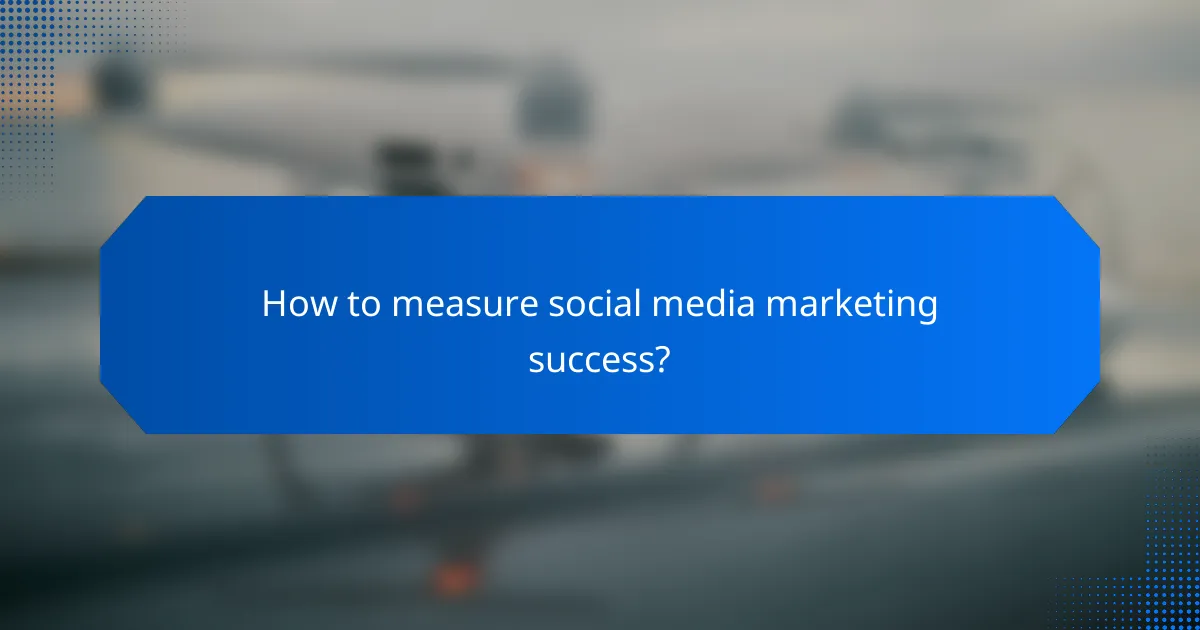
How to measure social media marketing success?
Measuring social media marketing success involves evaluating specific metrics that reflect engagement, reach, and conversion. By analyzing these metrics, businesses can determine the effectiveness of their strategies and make informed adjustments.
Key performance indicators (KPIs)
Key performance indicators (KPIs) are essential metrics that help gauge the success of social media marketing efforts. Common KPIs include engagement rate, reach, impressions, and conversion rate, each providing insights into different aspects of performance.
Engagement rate measures how actively users interact with your content, typically expressed as a percentage of total followers. Reach indicates how many unique users have seen your posts, while impressions count the total number of times your content has been displayed. Conversion rate tracks the percentage of users who take a desired action, such as making a purchase or signing up for a newsletter.
To effectively monitor these KPIs, set clear goals and benchmarks. For instance, aim for an engagement rate of around 1-3% for organic posts. Regularly review these metrics to identify trends and areas for improvement, adjusting your strategy as needed to optimize results.
